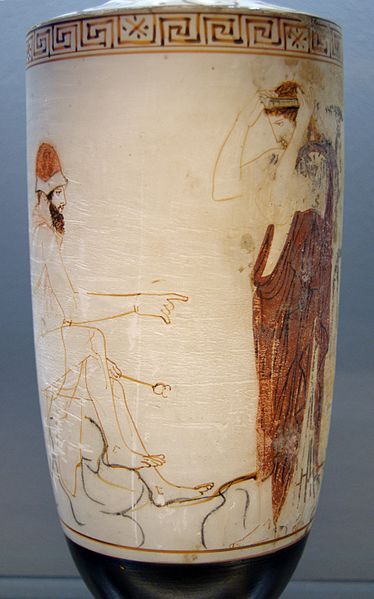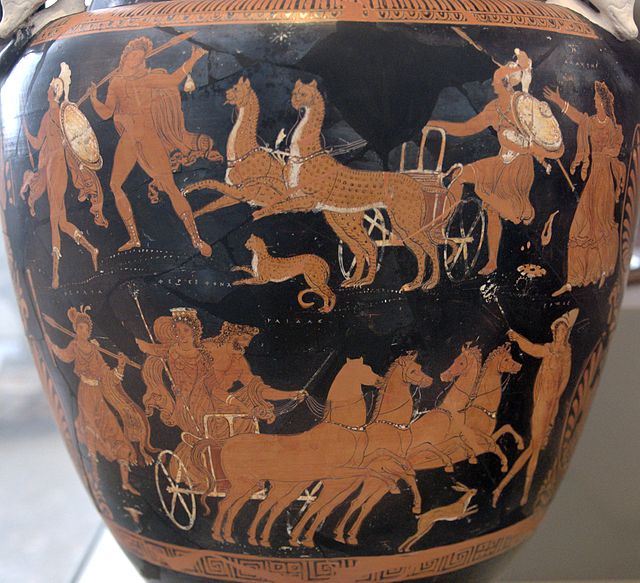In Greek mythology, the Greek underworld, or Hades, is a distinct realm where an individual goes after death. The earliest idea of afterlife in Greek myth is that, at the moment of death, an individual's essence (psyche) is separated from the corpse and transported to the underworld. In early mythology the dead were indiscriminately grouped together and led a shadowy post-existence; however, in later mythology elements of post-mortem judgment began to emerge with good and bad people being separated.
Hermes Psychopompos sits on a rock, preparing to lead a dead soul to the underworld. Attic white-ground lekythos, ca. 450 BC, Staatliche Antikensammlungen (Inv. 2797)
The Rape of Persephone: Persephone is abducted by Hades in his chariot. Persephone krater Antikensammlung Berlin 1984.40
Triple Hecate and the Charites, Attic, 3rd century BCE (Glyptothek, Munich)
Orestes at Delphi flanked by Athena and Pylades among the Erinyes and priestesses of the oracle, perhaps including Pythia behind the tripod – Paestan red-figured bell-krater, c. 330 BC
The afterlife or life after death is a purported existence in which the essential part of an individual's stream of consciousness or identity continues to exist after the death of their physical body. The surviving essential aspect varies between belief systems; it may be some partial element, or the entire soul or spirit, which carries with it one's personal identity.
A depiction of Idris visiting Heaven and Hell from an illuminated manuscript version of the Islamic text Stories of the Prophets (1577)
Georgin François, The 3 Roads to Eternity, 1825.
Judgment of the Dead in Duat
This detail scene from the Papyrus of Hunefer (ca. 1375 B.C.) shows Hunefer's heart being weighed on the scale of Maat against the feather of truth, by the jackal-headed Anubis. The ibis-headed Thoth, scribe of the gods, records the result. If his heart is lighter than the feather, Hunefer is allowed to pass into the afterlife. If not, he is eaten by the waiting Ammit. Vignettes such as these were a common illustration in Egyptian books of the dead.








